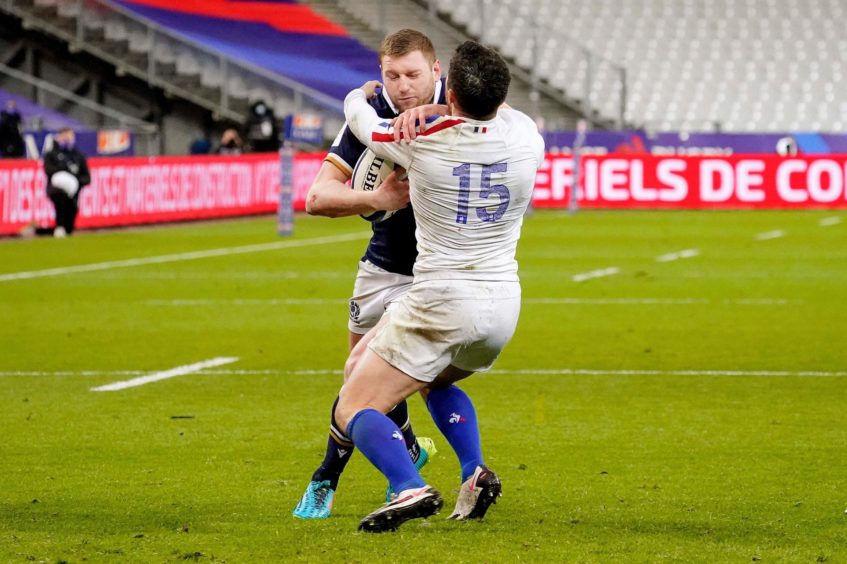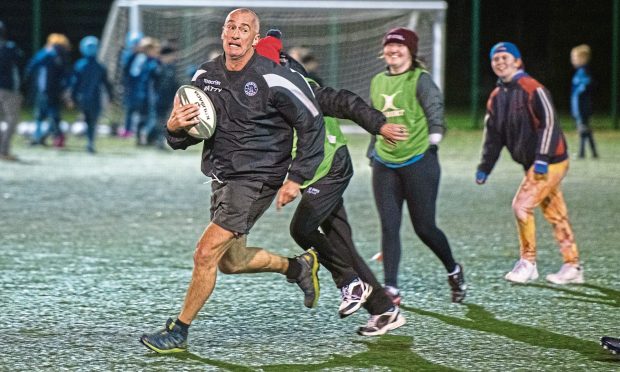By consensus, the 2021 Six Nations was, against all odds, the greatest ever.
This despite a pandemic, no crowds, one of the teams being hopelessly – and record-breakingly – out of their depth, a Covid-19 outbreak, a spineless horse-trading to get a game rescheduled largely for the benefit of the nation responsible and at the expense of a blameless participant, and far, far too much time spent on referees staring at large screens.
We dealt with most of that little lot last week. The last one was brought into sharp focus in the final game in Paris, the second in successive weeks to have ended on the last play and the eighth (out of 15 played) to be decided by a single score.
Two cards and a wild fluctuation of fortunes
We’d become accustomed to the flow of matches switching with yellow and red cards in 2021. In France vs Scotland, it fluctuated wildly in the space of three minutes.
In 71 minutes all hope appeared to have gone for Scotland when Finn Russell was shown a straight red card for a high fend on (former Racing clubmate) Brice Dulin.
With three minutes, referee Wayne Barnes had his pick of Frenchmen needlessly slowing the ball as an increasingly desperate Scotland attacked. He picked replacement scrum-half Baptiste Serin for the yellow, rather than monster lock Romain Taofifenua.
Suddenly, Scotland had life again at 14 vs 14. Had Barnes picked Taofifenua, they might not have needed as many as 20 phases on the final play to win the match.
(A quick aside: no-one has properly credited Gregor Townsend for throwing on Adam Hastings after Finn’s red. It won the game: no-one left could have thrown that long ball to Duhan van der Merwe for the try).
Doubling of yellows and reds in 2021
Six Nations 2021: Gregor Townsend’s thoughts after Scotland’s epic win in Paris
There were 16 yellow cards and five reds in 2021 championship – both, from my exhaustive (ahem) research, all-time records by miles.
There were two reds in the 2020 championship. Mohamed Haouas’ famous haymaker to Jamie Ritchie’s chin was an instant dismissal in any era. But before that it had been six years since a sending-off. Yellows tended to average out at six to eight a season, this year they doubled.
Why the leap? Well, the drive towards player safety is the clear reason. Four of the five reds in this championship would probably not have been shown until the new directives aimed at protecting the head and neck area.
The tip tackle purge
The precedent for this method of making the game safer is the tip-tackle purge of 2010-12. Spearing players into the ground head first was never a great look, and the authorities clamped down around the Rugby World Cup in 2011.
The sending off of Sam Warburton of Wales for a tip tackle in the semi-final of that tournament against France, by Ireland’s Alain Rolland, was a watershed. It manifestly affected the result. The furore afterwards maybe cost Rolland, a superior ref, the final (which went to Craig Joubert…nuff said).
But within three years the tip tackle had vanished from the game. In all the games I’ve watched in the last couple of years, I think I’ve seen one or maybe two.
Strict action effectively eradicated a plainly dangerous method in the game. It worked with over-vigorous rucking as well – you never see that now.
Finn’s red was right, but could have gone the other way
So is this strict action going to eliminate dangerous hits about the head? It’s been a slower process. It seems the instances are actually increasing.
And it’s a fine line. Let’s take Finn Russell’s sending off last week as an example.
First of all Barnes, the best ref in the game presently, got it absolutely right under the directives.
But if you watch it back, Russell is unquestionably unlucky. Scotland are chasing the game and he needs to break that tackle. If he fends with a hand and a straight arm, he’s fine; instead he instinctively fends with his forearm.
But if Finn doesn’t fend at all, Scotland probably get a penalty and Dulin gets (at least) a yellow card, because he’s gone in too high and his left arm wraps around Russell’s neck.
Make the legal tackle point lower
It’s this borderline players are struggling with. Tip tackling or rucking was much easier, you simply don’t lift a guy and you don’t shoe a man on the deck.
Impact and dominating tackles are essential in today’s defensive structures. Player continue to go in high on the edge, and others react in a split second with fend with the forearm.
To me there’s an easy way to make this simpler and to protect players. Just say that you can’t connect AT ALL above the chest area, in open play, tackling or clearouts.
This has been trialled in at least one of World Rugby’s endless surveys already. What we lose – some big hits on defence – seems to me to be wholly acceptable to what we gain, which is safer rugby.
And fewer yellows and reds that make for some ultimately dissatisfactory – although in 2021, very entertaining – outcomes.




